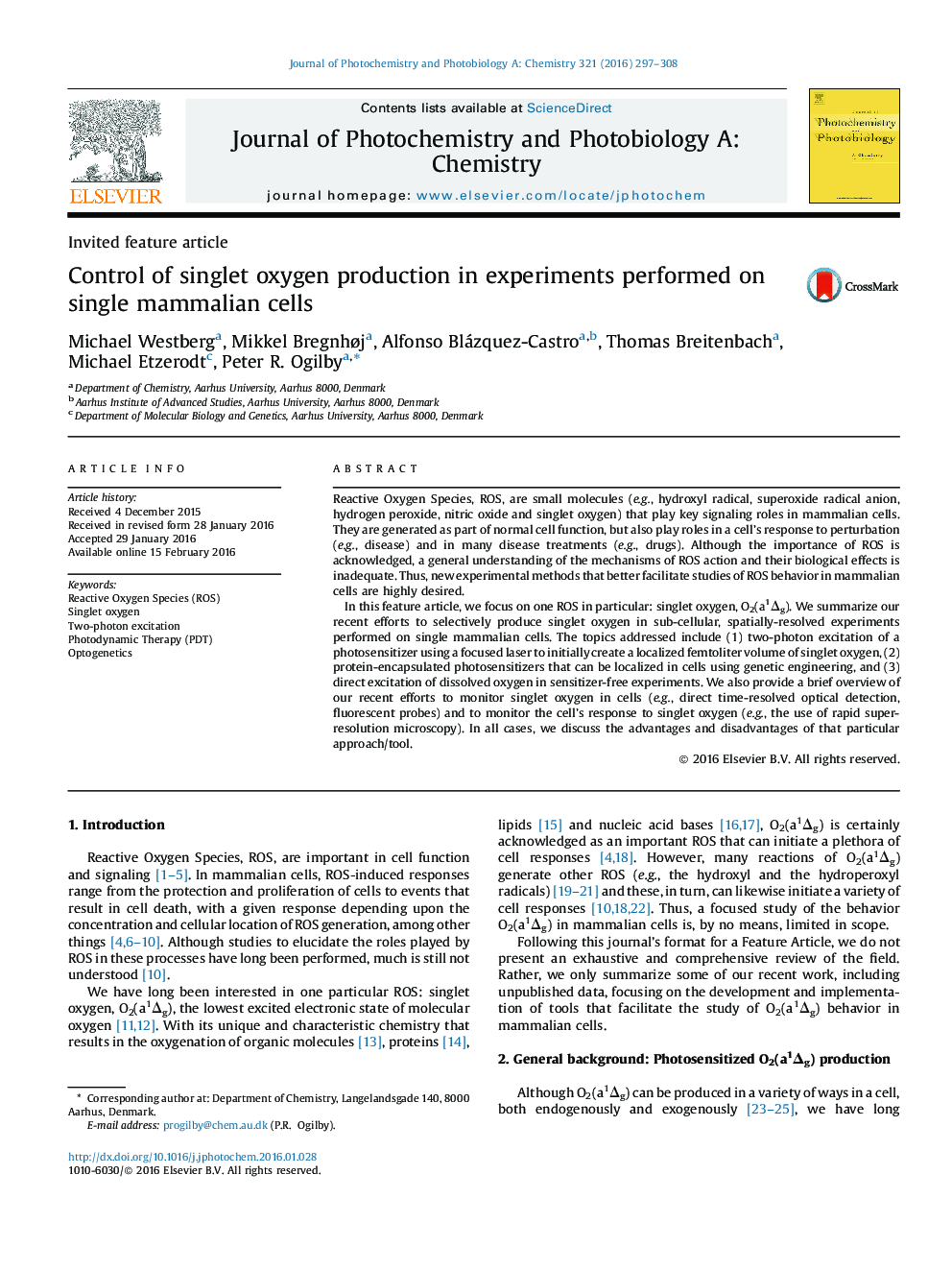| Article ID | Journal | Published Year | Pages | File Type |
|---|---|---|---|---|
| 26245 | Journal of Photochemistry and Photobiology A: Chemistry | 2016 | 12 Pages |
Reactive Oxygen Species, ROS, are small molecules (e.g., hydroxyl radical, superoxide radical anion, hydrogen peroxide, nitric oxide and singlet oxygen) that play key signaling roles in mammalian cells. They are generated as part of normal cell function, but also play roles in a cell’s response to perturbation (e.g., disease) and in many disease treatments (e.g., drugs). Although the importance of ROS is acknowledged, a general understanding of the mechanisms of ROS action and their biological effects is inadequate. Thus, new experimental methods that better facilitate studies of ROS behavior in mammalian cells are highly desired.In this feature article, we focus on one ROS in particular: singlet oxygen, O2(a1Δg). We summarize our recent efforts to selectively produce singlet oxygen in sub-cellular, spatially-resolved experiments performed on single mammalian cells. The topics addressed include (1) two-photon excitation of a photosensitizer using a focused laser to initially create a localized femtoliter volume of singlet oxygen, (2) protein-encapsulated photosensitizers that can be localized in cells using genetic engineering, and (3) direct excitation of dissolved oxygen in sensitizer-free experiments. We also provide a brief overview of our recent efforts to monitor singlet oxygen in cells (e.g., direct time-resolved optical detection, fluorescent probes) and to monitor the cell’s response to singlet oxygen (e.g., the use of rapid super-resolution microscopy). In all cases, we discuss the advantages and disadvantages of that particular approach/tool.
Graphical abstractFigure optionsDownload full-size imageDownload as PowerPoint slide
